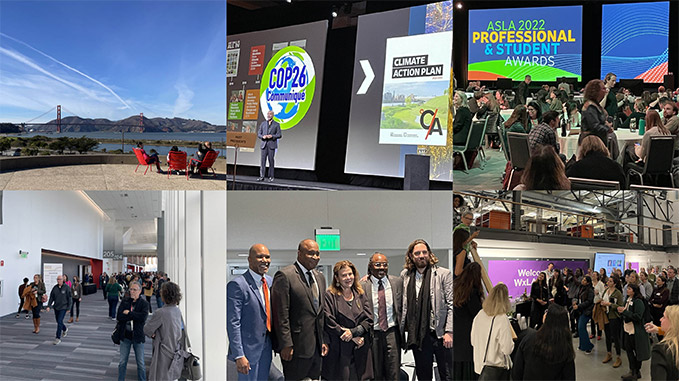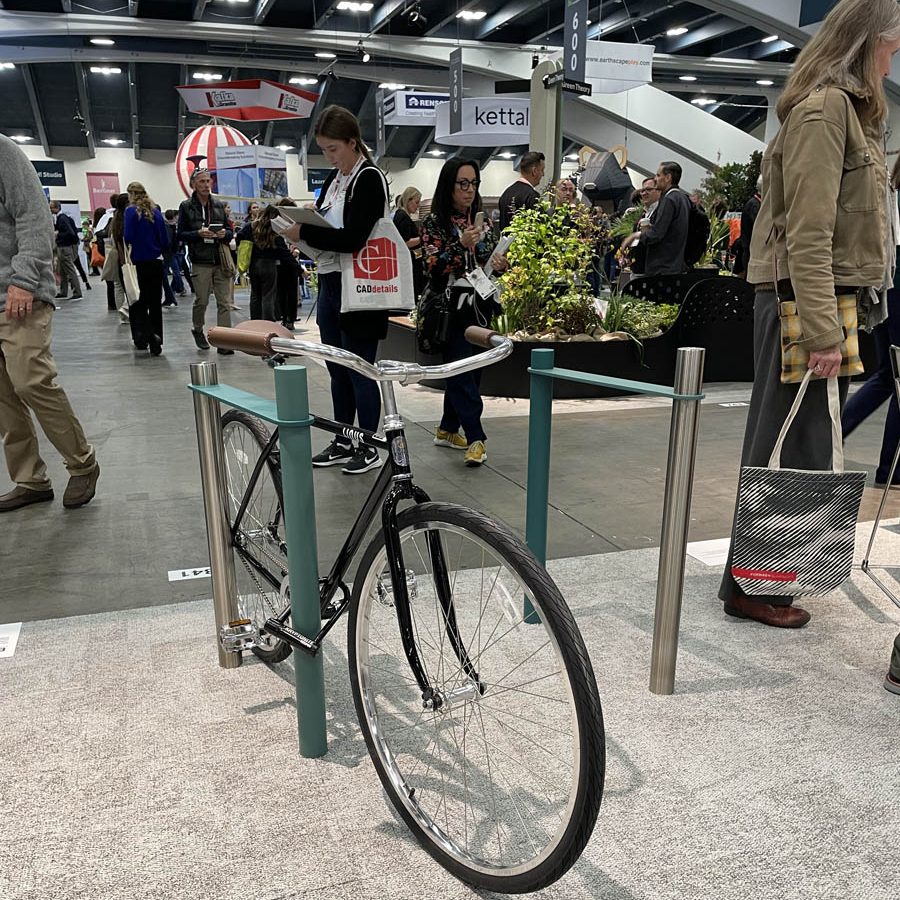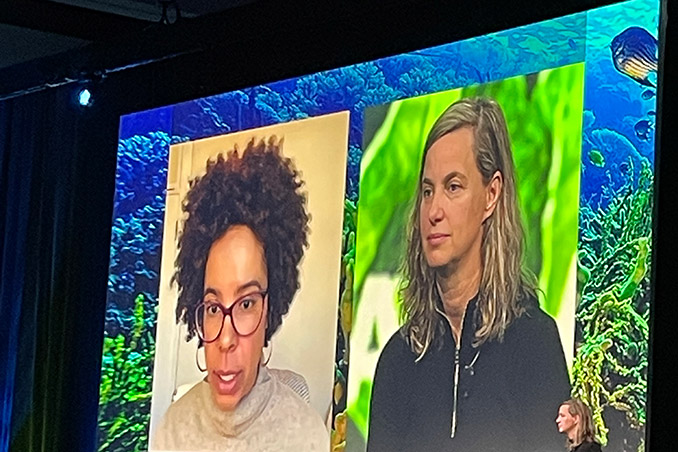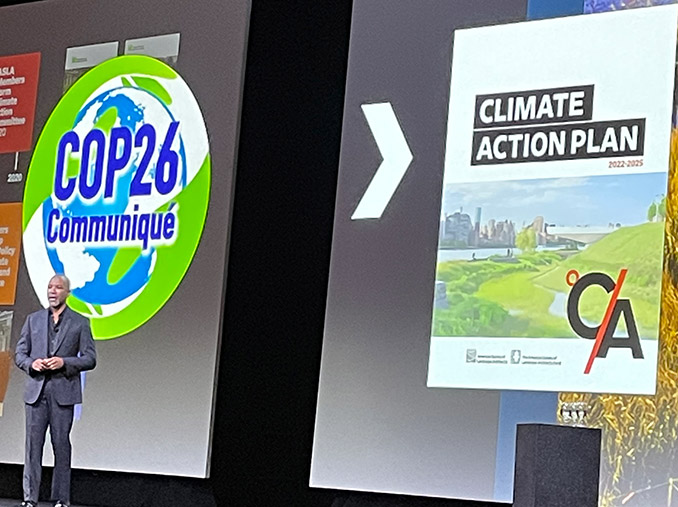
ASLA 2022 Conference on Landscape Architecture was an experience that provided the opportunity to connect with the profession, reconnect with people and learn about the vast array of work and research that the industry is undertaking. Over 6100 people attended the conference in San Francisco; most were from the USA, and attendees were from Canada, Australia, the UK and 31 other countries. It was an opportunity for the landscape industry to reconnect, learn and support the event after two years of COVID. It was my first opportunity to attend since the 2019 ASLA Conference in San Diego.
The conference provided many opportunities to attend education sessions, participate in tours, explore new products at the Expo, and enjoy meeting new people and reconnecting with old friends.

The theme was Designing a Better Future, and the keynote session with Dr. Ayana Elizabeth Johnson, moderated by Kate Orff, Founding Principal at SCAPE, was an honest discussion of how we need to design for a better blue-green connection between the land and the water and that there is a need to acknowledge that we need to stop trying to control nature and learn to live with nature. Dr. Johnson emphasized that we don’t need monumental designs to solve the issues we face and that much of the best work is often unseen. Most importantly, we need to see beyond political boundaries and think in terms of regions, mountains, watersheds, and biomes and transcend geopolitical borders.

After attending many sessions throughout the four days, I felt that there were several reoccurring ideas to take away from the conference.
- A need to reconnect with people after COVID. We, as landscape architects, need to reconnect with communities, clients, and stakeholders and work with them to develop ideas and solutions for their design problems.
- Slowing down in the design process can provide better results and outcomes. There is a need to review, read, and understand the problem before starting to make design decisions.
- Distilling information is an essential process in a world with an increasing amount of data and data sources. There is a need to explore the various processes and tools available, but there is a need to critique the process and assess the data (qualitative & quantitative). Eventually, needing to make decisions on whether the information at hand is valuable to the design process.
- Technology is a tool in the design and decision-making process and should not override the need to find solutions for problems and improve the environment. Sometimes we head down the “rabbit hole” of technology only to find that the solutions to the problem were easily found through consultation.
- Drawing is still a fundamental way to question, explore, learn, analyze, and organize ideas and thoughts. Whether using a 2B pencil and paper or an iPad or collaborating with clients through Miro, drawing and sketching can be a powerful tool. Adding that, it is not just a visual tool but a brain tool to allow you or your team to develop ideas.
- We need to take action on climate change in every project. ASLA released their Climate Action Plan with the goal of zero emissions by 2040. As landscape architects, we need to move quickly and scale up our efforts, whether through design, advocacy or education. We are one of the few professions that can create carbon-positive solutions and go beyond zero emissions.

The ASLA 2022 Conference is a learning experience over four days; however, many side events provide opportunities to connect and support various profit and non-profit initiatives, including the University Alumni, LAF, WxLA, BlackLAN, and this year the new gAySLA! (or, lgbtqiASLA) started by Michael Grove (Sasaki) and Cheri Ruane (Weston and Sampson).
The idea for creating gAySLA began in Nashville last year in an exchange between me, Cheri Ruane, and Kris Prichard. Since there was not an affinity group for LGBTQ+ landscape architects, we thought we’d test it out in San Francisco. The number of people who showed up at what we thought was going to be an intimate gathering was validation that this group of professionals was seeking community.
Michael Grove
Also, ASLA and ASLA Northern California chapter presented the legacy project (an annual gift to the host city), in the 100 block of Golden Gate Avenue in San Francisco’s Tenderloin District. The project partnered with St. Anthony’s Foundation with the participation of local high school students and college students majoring in landscape architecture to positively impact the neighborhood with designs for parklets, with the first phase to be finished in Fall 2022.
The event, for me, was a reset after COVID and reinforced the power of learning through in-person events and the serendipitous conversations you have through meeting and connecting with people. Several conversations lead to hearing from FIU students about reading WLA, going to visit projects and offices, and generating ideas for future initiatives. The power of human connection and learning was the greatest lesson from the conference.
Connections and Learning at the ASLA 2022 Conference on Landscape Architecture written by Damian Holmes, Founder & Editor of World Landscape Architecture (WLA).
Cover Images Credit: Damian Holmes
